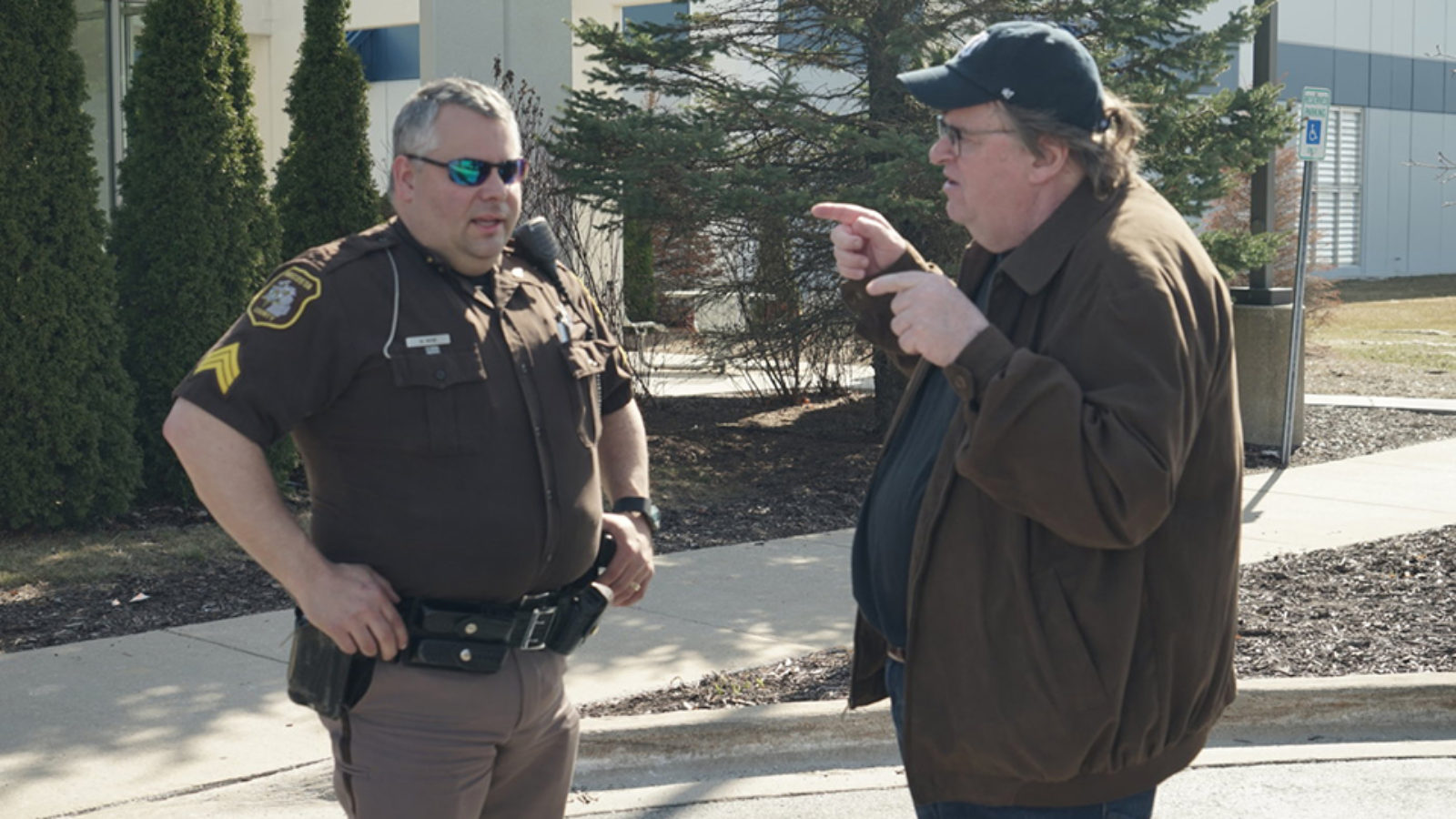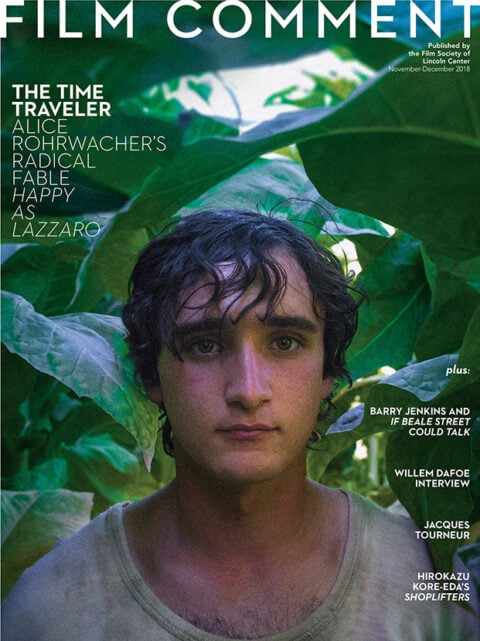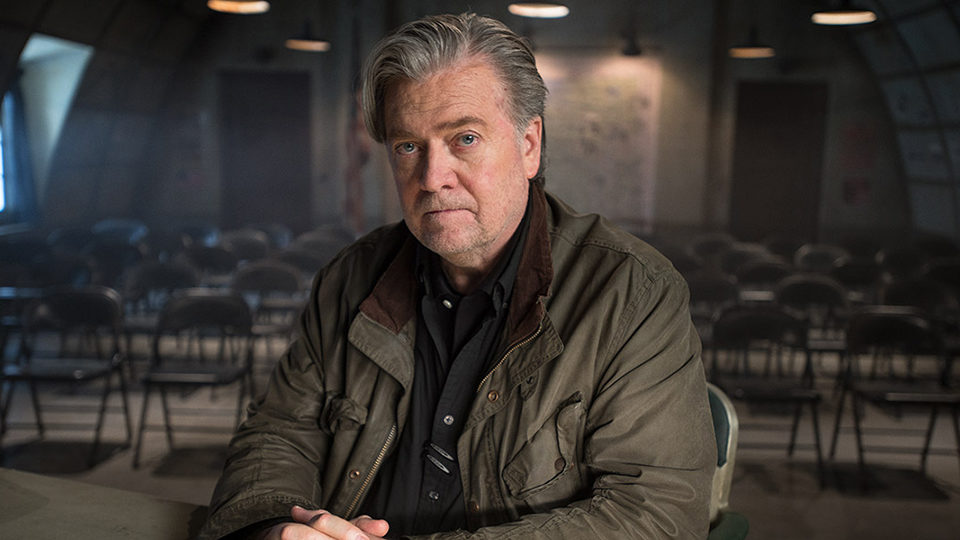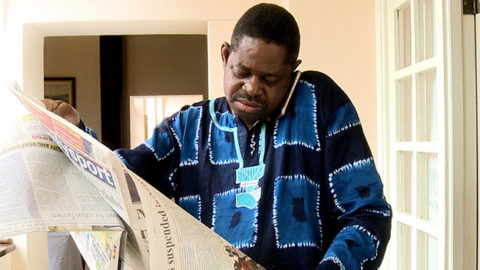By Eric Hynes in the November-December 2018 Issue

Make It Real: The Big Game
The elder statesmen of documentary are pouncing upon our dire moment, but to what end?
When Donald Trump was elected President of the United States in November 2016, many Americans felt trepidation about handing over the most powerful job in the world to a pugnacious, intellectually incurious, alarmingly partisan political neophyte. Some dissenters politicized; others descended into depression; still others focused on personal, perhaps more manageable matters; many cried. Almost immediately, questions arose within documentary circles about how best to respond to the changed situation, one in which reported facts had become relativized, all news was being read as sectarian spin, anything other than fighting for or protecting the vulnerable felt irresponsible, and sources of financing and logistical support seemed destined to either double down on or revert to a standard of advocacy and opposition.

From the November-December 2018 Issue
Also in this issue
Many nonfiction films have been developed, produced, and released since then, some explicitly addressing the current state of things, others doing so obliquely, most implicitly shadowed by it all. Now as the U.S. nears the second anniversary of Trump’s ascendancy, and careens toward hugely consequential midterm elections, some of the biggest names in documentary have emerged at the same time—i.e., September’s Toronto International Film Festival—with films centered on globally powerful political figures. To a man—as indeed all of them are—the great men have elected to take on the “great men.” It’s like the elder stars of nonfiction all challenged the elder masters of the universe to a game of pickup basketball—no zone defense, just one on one. Errol Morris? He’s got Steve Bannon (American Dharma). Michael Moore? He’s taking Donald Trump, of course (Fahrenheit 11/9). Werner Herzog? Bit of a wild card, as you might expect, so he’s taking Mikhail Gorbachev (Meeting Gorbachev). Hey, who’s got Putin? Let that be Vitaly Mansky—he’s been covering him since 2000 (here with Putin’s Witnesses). Wait, what about Fred Wiseman? Oh, he’s playing a different game.
There’s an easy observation to be made here, something along the “writing what you know” spectrum that has so many times already yielded older white dudes training their cameras on older white dudes. But there’s also the notion that artists with a fair amount of doc industry clout are drawn to subjects with far more real world clout. Big game recognizes big game. It takes hubris to even get on the court with these players, and in the Moore and Morris films in particular, the directors take a moment to assert their sense of belonging. Moore and Morris make bemused disclosures of entertainment-world overlap with Trump and Bannon, which come off somewhere between high school yearbook retro cringe and weird stamp of approval. Moore expresses regret over agreeing to go easy on Trump during a segment on Rosanne Barr’s 1990s daytime talk show; but also makes sure we hear Trump, in that segment, and Jared Kushner, in a later archival clip, praising the filmmaker. Their sycophantic gestures don’t invalidate Moore’s attacks on the Trump administration, but I’m not sure they embolden his takedowns much either, especially since his tactics tend toward a related brand of image-conscious populist grandstanding. Pop star recognizes pop star. When Moore’s targets were sequestered in ivory towers, his catapulted fireballs could do some real damage; as his targets have become fellow media darlings, the battle can’t help but seem feud-like, grudge-like, frankly more of a game than a battle.

American Dharma
With Bannon, Morris plays some sort of game, seated as he is across from the former Trump advisor at an old office table (instead of optically channeled through the lens via Interrotron). They have a rangy chat, revisit the 2016 presidential campaign (Morris confesses to Bannon that he voted for Hillary out of fear of Bannon and his ilk), discuss the early months of the Trump presidency, and name-check a few of Bannon’s favorite movies. The fellow independent filmmaker’s appreciation for Henry King’s Twelve O’Clock High inspires the mid-century war-room set on which their conversation is staged, queasily flattering Bannon’s self-presentation in a military green-jacket—and he in turn professes love for Morris’s own Fog of War. Their politics aren’t the same, but artist recognizes artist. I have never seen someone happier to be the subject of a documentary—and I have seen Tony Robbins: I Am Not Your Guru.
Morris’s approach is like Muhammad Ali’s famous rope-a-dope strategy, except there’s no knockout punch—or any punch, really. Not that one is promised—unlike with Moore, that’s never been Morris’s approach with “great men,” or anyone. He’s headier, craftier, more termite-like than that, rooting out systems, delusions, sub-terranean impulses, psychological irreconcilabilities. But as in previous feature-length interview films with media-savvy stiffs Robert McNamara and Donald Rumsfeld, sitting down to a conversation about ideas with Bannon winds up showcasing those ideas, no matter how much extra business—graphics, dramatizations, pop-up headlines and contradictory tweets—the director adds into the mix. Despite the best of intentions, the filmmaker fails to render these men as Errol Morris characters; rather, they convert Morris’s project into an opportunity to self-mythologize, obfuscate, image-launder.
While Moore and Morris play man for man, Frederick Wiseman sticks to the zone. Implicitly political instead of overtly so, landscape paintings instead of portraiture, Wiseman’s two Trump-era films have looked at communities instead of personalities. Where Ex Libris: The New York Public Library contrasted the administration’s anti-intellectual, anti-fraternal, anti-immigrant, anti-cultural villainy with a near-utopian vision of boundless curiosity, multicultural urban enmeshment, good intentions, and overlapping thought bubbles of ideas and civic agitations, Monrovia, Indiana sees Wiseman surveying life in a small Midwestern town. One thousand citizens strong, nearly 99 percent of whom are white, most of whom are Republican, Monrovia is basically the “again” that many would like to make America.
Of course Wiseman doesn’t say any of this—nor does he attempt to undercut the town’s attributes or values. Moment to moment, he offers nothing but humane respect and fascination for those under his gaze. But threaded through episodes in shops, on farms, in meetings, and in churches are traces of questions that communities are facing throughout the country: who are we, who do we want to become, how will we live? Town officials politely squabble over new residential developments, debating economic growth against cultural legacy. People grow, cook, and eat; some suffer, others exercise. People come together, separate, engage in the present and worry about the future, perpetuate old ways and incorporate new ones, and then, as illustrated by a long penultimate sequence, perish and are missed. No one talks politics in the film, and though Wiseman said after the premiere at TIFF that this is just as he observed things, it’s likely also as he intended.

Monrovia, Indiana
He too is writing what he knows—strip-mining, not stone-throwing; orchestral arrangement, not argument—except that what he knows isn’t limited to sparring with those in his weight class. In response to America being in crisis, he’s making movies about Americans of various kinds—voters and non-voters, optimists and pessimists, idealistic librarians and county-fair cutups. There’s some pressure on filmmakers these days to stay in their lane, both to focus on matters they know from personal experience, and to avoid telling others’ stories. But I don’t see what we gain from keeping New Englander Wiseman out of Indiana, or Italian transplant Roberto Minervini from the American South, such as in his latest, What You Gonna Do When the World’s on Fire? (also at TIFF, in the Wavelengths program).
You could say that no lane belongs more to Michael Moore than Flint, Michigan, and yet the passages of Fahrenheit 11/9 centering on the ongoing crisis in his hometown—the best of the film, and the best passages of any Moore film in more than a decade—feel out of place among the headline-pitched bluster. These Flint scenes may take place on his home turf, but they also involve the director seeking out other voices, allowing others’ anger to eclipse his own. He’s using his power not to personally topple the powerful, but to give voice to the less powerful. With Trump, Bannon, Putin and Co. having sucked enough air from the room, having proven plenty capable of enduring whatever broadsides the old guard documentarians have to offer, redirecting attention (and comparatively big budgets) to other faces and perspectives is what feels truly oppositional, and politically necessary, in our current critical moment.
Eric Hynes is a journalist and critic, and curator of film at Museum of the Moving Image in New York.





